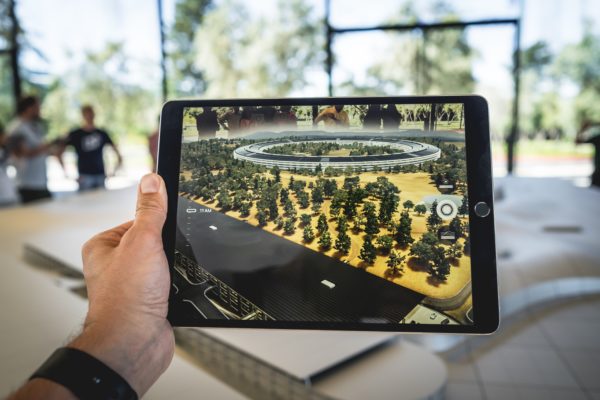New technology will help visitors to Victoria’s parks get the most out of their experience.
A trip to one of Victoria’s national parks may give people a different definition of “fog” as Deakin University researchers work with Parks Victoria to trial a new way of providing visitor information using Fog computing.
“Visitors to national parks are keen to learn about local attractions and the flora, fauna and geographic features of the park,” said Professor Yong Xiang, Associate Head (Research) of Deakin’s School of Information Technology.
[testimonial_text]Unfortunately, unavailable or unreliable access to cellular networks in remote parks can prevent them accessing this information while on-site. Fog computing is a promising technology for solving this problem.[/testimonial_text]
[testimonial_picture name=”Professor Yong Xiang” details=”Associate Head (Research) Deakin School of Information Technology”]
 [/testimonial_picture]
[/testimonial_picture]Most people are familiar with “the cloud” as a place to store data and access it from anywhere.
However, cloud computing relies on bandwidth, or the maximum speed that data can be transferred from one place to another, to work effectively. In remote areas where bandwidth is insufficient, that’s a problem.
Fog computing solves this issue by acting as the “middle man” between mobile devices and the cloud.
Also known as “cloud close to ground,” it deploys light-weight computing facilities called Fog servers at the proximity of mobile users, which can connect wirelessly with mobile devices.
By pre-loading customised information onto the Fog servers, Fog computing can provide high-quality, low-cost data distribution, such as static information and video/live streaming, to mobile users in the area.
For organisations like Parks Victoria, which manages close to 3000 parks and reserves across the state, including large and remote national parks such as Wilsons Promontory, the installation of Fog servers offers the opportunity to interact with visitors, provide information, train staff and track the number of visitors per park, per day, by analysing the number of passive wireless connections to the Fog servers.
The 12 month “Information Oriented Fog Servers in National Parks” project is funded through a grant from Victorian charitable organisation The Telematics Trust and will see Fog servers installed in trial sites at selected Victorian parks.
Professor Xiang is co-chief investigator on the project, along with Dr Longxiang Gao and Dr Atul Sajjanhar, also from Deakin’s School of IT.
The project is not the first time School of IT has collaborated with Parks Victoria. The organisations worked together in 2016 to develop technology to monitor wildlife in up to 20 of Victoria’s 44 national parks.
Dr Mark Antos, Acting Manager – Science and Management Effectiveness at Parks Victoria, said the Fog computing project would provide valuable opportunities for the organisation, especially in better engagement with visitors.
[testimonial_text]We manage 18 per cent of the surface area of Victoria, including some very large national parks that are thousands of square metres.[/testimonial_text]
[testimonial_picture name=”Dr Mark Antos” details=”Acting Manager of Science and Management Effectiveness at Parks Victoria”]
 [/testimonial_picture]
[/testimonial_picture]“In many of the more remote parks, there is no access to Wi-Fi, or even mobile phone signal. This technology facilitates access into areas where we have a lot of visitors but no real way to reach them, such as some of the remote camping areas in Wilsons Promontory.”
Dr Antos said while the research would initially explore providing educational information to visitors about flora, fauna and walking tracks, in the future Parks Victoria hoped to be able to use the servers to communicate emergency information, such as warnings about extreme weather or bushfire, or to help locate lost hikers or campers.
Dr Antos, a wildlife biologist, is also interested in the conservation potential of the technology.
“The ability to track the number of visitors to particular areas of the park will assist in park management and help us assess ecosystem protection needs,” he said.
Professor Xiang said the project was the first in Australia to transform the Fog computing technique into a real product by developing Fog servers to provide an information oriented wireless communication platform for remote national parks.
“We hope to continue the project by exploring the deployment of Fog servers in other states’ national parks, as well as for other applications in remote towns,” he said.
“We are also planning to develop Fog servers driven by solar power.”
Main photograph: Dr Longxiang Gao (left) and Professor Yong Xiang (right).
Published by Deakin Research on 30 August 2017



